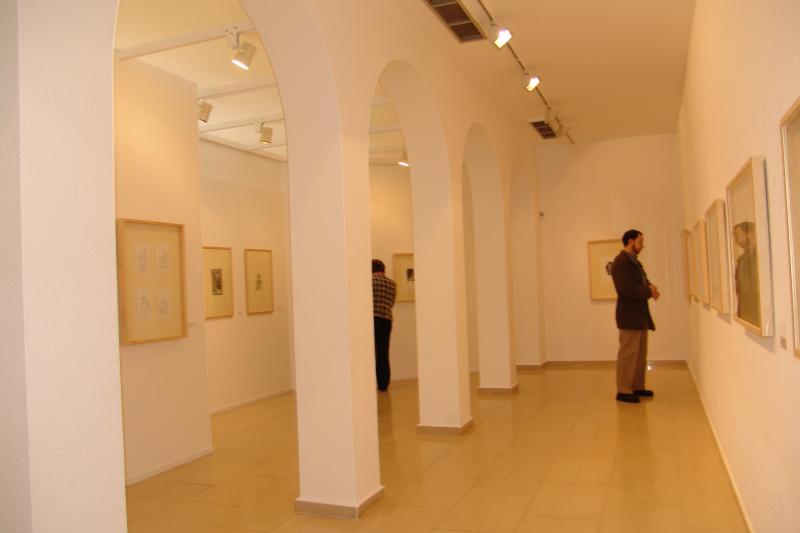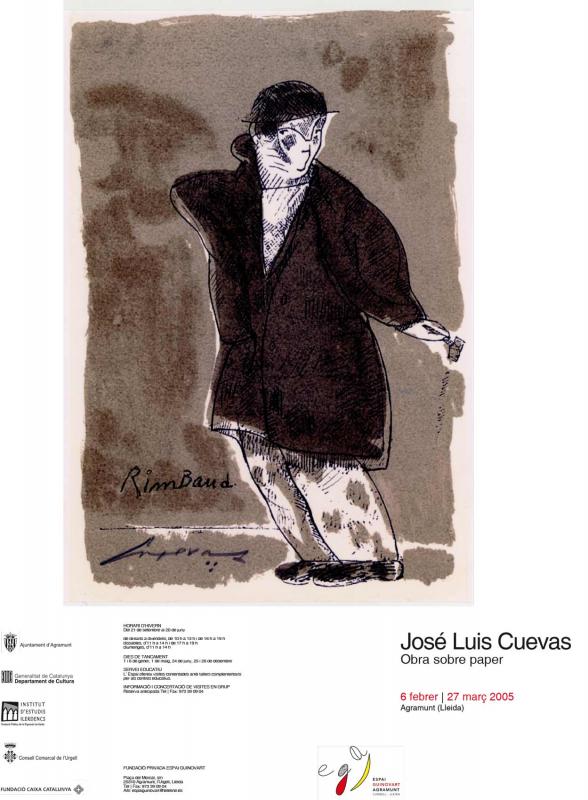José Luis Cuevas
Work on paper
José Luis Cuevas
Mexico DF, 1934
Almost self-taught Mexican painter and draftsman, he began a series of drawings on prostitution, and later he exhibits, from 1955, in the gallery Edouard Loeb (Paris). The nervousness of the stroke and the dexterity of the atmosphere characterize their plastic work. Picasso's influence is very sensitive, even for the repeated presence of the artist in the midst of his scenes. With the series The funerals of a dictator, he earns the prize for best cartoonist at the Biennial of Sao Paulo (Brazil) in 1959.
Among his many exhibitions are those held at the Lodz Museum of Art (Poland, 1976); the Museum of Modern Art of the City (Paris, 1976); the Cultural Center of the City of Madrid (Madrid, 1977); the Museum of Fine Arts of Bilbao (Bilbao, 1985); the Museum of Modern Art of Montevideo (Uruguay, 1989); the Casa de la Moneda Museum (Madrid, 1997), and the Museo Reina Sofía Art Center (Madrid, 1998), among many others. His work belongs to multiple museums in Latin America and Europe
The sense of space in the work of José Luis Cuevas (Mexico DF, 1934) is shaped in the game of limits, in its interaction with the forms that are created. Creating a site means setting limits, delimiting by entering a space or emptying it. Removing the space of any drawing is, for Cuevas, to configure a place, between life and death, from which to contemplate the horizon and deliver itself to the light and the trace that the own light creates. The art of Cuevas sprout is an incessant game of forms, volumes, languages. Everything is fighting and it is recreated at the same time. Reverse sense of reality: structures that produce movement, sound.
While in Europe, the work of abstract expressionists such as Willen de Kooning, Pollock, Esteban Vicente, Franz Kline and Robert Motherwell was imposed, is when José Luis Cuevas made his famous lithographs on the work of Quevedo, Kafka and the Marquis of Sade The figure breathes, a sign that embodies an obscure desire to create; At the same time, the stroke unfolds secretly on each line. Mineral dream that is dissolved in space: sensible contradiction, space is not touched, it is perceived. Color and form are united in a highly poetic context. In some drawings and engravings, the artist returns to "recompose" the figures, gives them a composition to achieve the desired effect. He likes to contrast surfaces: work in the organization of space, break, tear, that is, unify.
Elegant chance, as André Breton said. Fullness and emptiness, visual and poetic game to make up a language. Symbol that is better and worse. The symbol is reality and unreality, a linguistic game that finds an important meaning in the work of Cuevas. This exploitation not only evokes its figurative creativity, where it recreates agonies, crimes, domes, mischiefs, monsters and human monstrosities. Boldly and sarcastic, it is lost in multiple images that are generating a certain expresionist gesture, which placed its work, along with other Latin American artists, in a fertile space that recapitulated the past, near and far away, and that It seemed like a reinventive fabulation of figuration.
Cuevas offers a reading of his work that still has to be done, and it would not be in vain, because he underlines the nature of a work that does not culminate yet, but has turned his language into artistic matters, in a creator without return , but in the center "reformulator" of the contemporary aesthetic change. That is, it takes and retakes a poetic voice populated with symbols that go beyond the epitaph of art. Cuevas breathes unpublished airs constantly and each stroke is a fleeting nostalgic image, it is a meditation on the beginning of unhurried imagination to unravel the everyday complexity, at the same time that it bases cognitive concepts on its artistic activity: line, movement, sign that is find lasting Each work is complex, rich and dazzling.
Fragment of "The imagination of the moment: signs of José Luis Cuevas" by Miguel Ángel Muñoz




